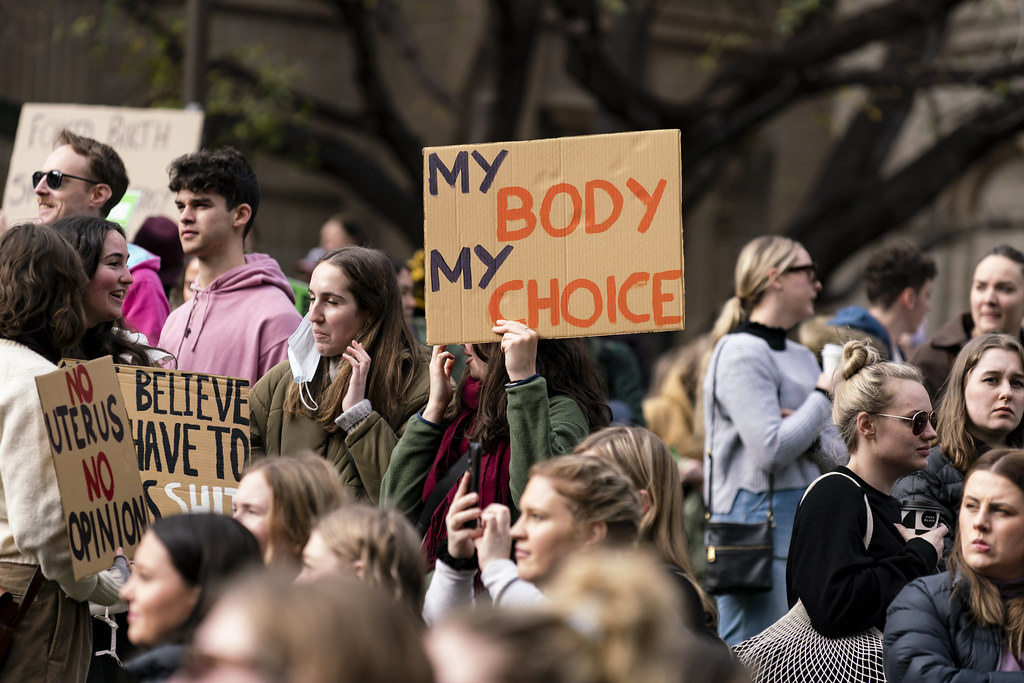In 1969, Norma McCorvey, an unmarried woman who wanted to terminate her pregnancy, was denied an abortion because it he life wasn’t at risk. In 1972, a case was sent to the Supreme Court under the alias Jane Roe, which was actually McCorvey. On January 22, 1973, the U.S. Supreme Court announced its decision, siding with McCorvey. Since Roe v. Wade was first introduced in 1972, more and more ways to deny women the right to their bodies have been created. In 1879, Connecticut senator P.T Barnum banned contraceptives and sharing any information regarding them. Estelle Griswold, executive director of the local Planned Parenthood League, was fined $100 for disobeying the law. In Griswold v. Connecticut, the Barnum Act was disabled. Griswold’s ideas of women’s rights laid the foundation for Roe v. Wade to be successful. On June 24, 2022, nearly 50 years later after abortion was considered a constitutional right, the Supreme Court overturned Roe v. Wade.
In 1971, 44 states had outlawed abortion with exceptions for rape, incest and fetal anomalies. Anyone capable could travel to a state where abortions were legal, but for others like McCorvey, that was never an option. Meanwhile, a group of lawyers in Texas, including but not limited to Sarah Weddington and Linda Coffee, wanted to find a case that challenged the widespread abortion bans. Coffee found out about McCorvey’s situation through a lawyer friend and in 1970, the three women met at a Dallas restaurant to discuss the repercussions of banning abortion and the reality of “backstreet abortions.” After said meeting, Coffee and Weddington filed for McCorvey. Dr. James Hallford, who had charges brought against him for performing abortions, later joined Norma’s case. Weddington argued the case against the all-male Supreme Court once on December 13, 1971, and again when the case was reargued on October 11, 1972. On January 22nd, 1973, Norma McCorvey won, with 7 out of 9 justices agreeing that the 14th Amendment protected a woman’s right to get an abortion. Any statewide abortion bans in place at this time were also considered unconstitutional and lifted.
However, this did not give anyone access to abortion and if it did, it was confusing and hard to do. For the next half-century, politicians underhandedly made laws to restrict abortions in ways that made them very difficult to access. Former Justice Ruth Bader Ginsburg mentioned in her 1992 journal that she thought Roe would’ve been better had the Supreme Court not made its decision only based on the right to privacy and chose the Equal Protection Clause as their reason instead, which states that all people must be treated equally. Between 1992 and 2021, 1,336 state abortion restrictions were put in place. The Supreme Court eventually ended up changing so much that they allowed Texas to enact a law that made Roe almost pointless for women living there. The law, S.B.8, prohibited any abortion after six weeks of pregnancy, which is before a lot of women are aware they’re even pregnant. On December 1st, 2021, almost 49 years after the original ruling, the Supreme Court caught wind of a Mississippi ban on abortions at 15 weeks pregnant. The state then asked the court to “get rid of” Roe.
Justice Sonia Sotomayor revealed that Mississippi politicians admitted to writing the 15-week abortion ban to give justices, 3 of whom were appointed by Donald Trump and those who had previous involvement in reproductive rights, a chance to overturn Roe v. Wade. She also pointed out that 15 justices, in the last 30 years, had re-enforced the idea that the government forcing a woman to carry a baby she did not want is unconstitutional and said “Will this institution survive the stench that this creates in the public perception that the Constitution and its readings are just political acts? I don’t see how it is possible.” Many American citizens were never made aware that abortion was at risk of no longer being a constitutional right until May 2nd, 2022 when a draft showcasing the preparation and majority decision to overturn Roe was leaked. Less than a month later, on the 24th of June, Roe v. Wade was overturned, neglecting the years and years of previous cases of allowing abortion. This decision meant every state had the right to make it illegal for women to get abortions, and many did so in mere weeks.
Currently, the choice to decide on women’s bodies is still not ours, and getting there is harder than it ever was before. Many people have protested, signed petitions, called their governors, and consistently spoken out about the horrors they’ve seen women go through or experienced themselves in outrage, but nothing has changed yet.


























































































































